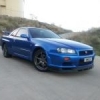Announcements
-
Similar Content
-
Latest Posts
-
It will give gains, but you wont hit 600 It will give gains but it wont get you to 600 imo. You will also sacrifice low down and you will be adding extra volume if you port match it, more so if you port the plenum runners depending and how its done I think the only time youre going to see about 100hp gains is if the car is making well over 1k kw I do have a spare set that I was going to test with, but i dont actually think there is anything worth getting going larger. I did a fair few S14/S15 and the standard TB is fairly small, I went to 60 and in some cases 64mm which is significant over the stock unit. You can also get some weird ratio changes. I think 20kw will be a stretch on a roller dyno. If I had it apart I might mill the shafts a little and not expect much, I think the stock size is still pretty good for a street/track car even with larger capacity. I might change diameter it if its a drag only car
-
Was going to say something about flog, wife, pilates, behind but I better not... No dishonour here
-
Store bought, like dis https://racecraftaus.com/products/muffler-oval-new?variant=39611886305393
-
As long as the bucket stays against the cam then it will measure up fine, the valve will close compared to a running engine but the bucket will stay against the cam lobe
-
By PotatoCake · Posted
I feel like i would be like most people who get these, excited for the first 3-6 months and then just totally forget about it. The end products do look sick tho. Ive got a 1/12 scale r32 model, dunno where im gonna actually display it once its all done!
-







Recommended Posts
Create an account or sign in to comment
You need to be a member in order to leave a comment
Create an account
Sign up for a new account in our community. It's easy!
Register a new accountSign in
Already have an account? Sign in here.
Sign In Now